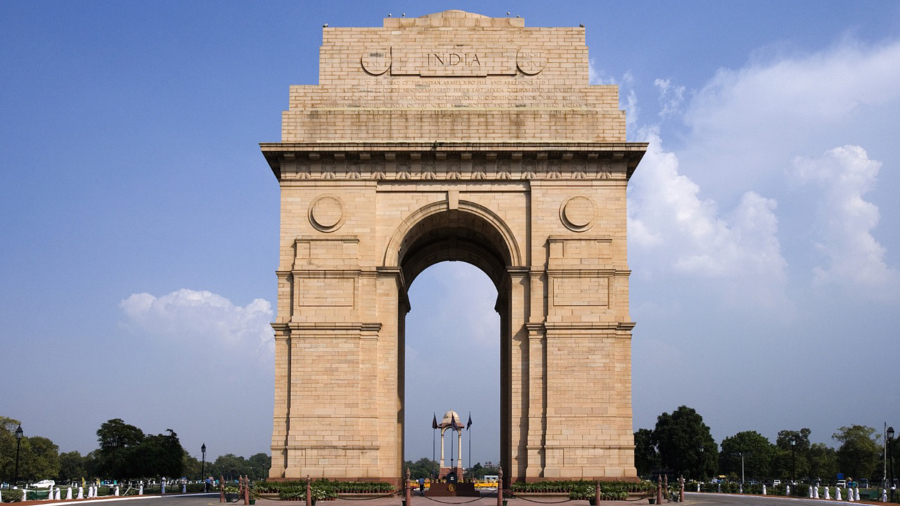Is India becoming a tech powerhouse?
An economy that is turning from elephant into tiger

It used to be called the Elephant Economy, but the vast subcontinent of India is fast moving up the list of global markets where tech is big business. In the world at large, India has produced myriad multinational IT firms, from Infosys and Tata to Wipro and Cognizant. But as an internal marketplace, India can seem impenetrable; this country is like nowhere else on the planet.
The challenges are many. Roads are choked with traffic, most people lack bank accounts, and electricity is far from ubiquitous in a country where 22 official languages (among 150 commonly used tongues) resist cultural uniformity. That complexity makes it an unforgettable place to travel in, but its business and political landscape is tricky to navigate.
But India has the numbers on its side – here lives many of the Next Billion we hear so much about. A whopping 50% of the Indian population is aged 35 and under – the largest population of youth anywhere in the world – while India has the third largest online population in the world.
Crucially, it's on the brink of producing a sizeable middle class. With a tech-savvy population on the rise, India's digital economy is exploding. And with India's tech industry predicted to take $12 billion (around £7.8 billion, AU$15.2 billion) in 2015, is Asia's famously elephant-like country at last becoming an irresistible Tiger economy?

How is India's tech economy performing?
Earlier this year India overtook China as the world's fastest growing big economy. However, Indian manufacturing has actually been in decline for a number of years. "The sector only contributes around 16% of India's GDP each year and less than 2% of the overall global manufacturing output," says Jonathan Wilkins, marketing manager at European Automation, an industrial automation parts supplier. "This sector employs around 58-60 million people, which is just about 12% of the overall working population."
Over the next 15 years, it's estimated that almost 250 million people will enter the working world in India, which means only one thing – India's manufacturing needs new investment, new infrastructure and new technology. Cue the Indian government's Make in India scheme, which got a lot of attention at the recent Hannover Messe.
"It's designed to foster innovation, enhance skill development in industry and promote the Delhi-Mumbai Industrial Corridor (DMIC) as a global manufacturing and investment hub," says Wilkins. The philosophy of the project is sustainability, connectivity and development. Rejuvenating the manufacturing and technology landscape in India is a long-term project, but Wilkins thinks results could come fast, saying: "If companies appreciate the benefits of Industry 4.0 and are willing to adapt and accept the changing landscape, radical transformations aren't very far away."
Are you a pro? Subscribe to our newsletter
Sign up to the TechRadar Pro newsletter to get all the top news, opinion, features and guidance your business needs to succeed!

Smartphones and the coming middle class
With little fixed-line broadband, the digital economy in India is conducted on phones. A whopping 77% of Indians use a smartphone; that's over 900 million people. Not everyone's online – some say only a fifth are connected to the net – but it's growing fast. Competition is ruthless, handsets are cheap, and calls can be made for a single rupee per minute. Even in poor rural areas, that's incredibly cheap and is changing the way lives are lived and business is done.
Trillions of rupees have been raised by the Indian government through wireless spectrum auctions, and everyone from Sony, Lenovo, Samsung and Panasonic to Chinese handset makers like Xiaomi, Huawei and ZTE all have their eye on India.
India's market dynamics make it irresistible to global tech companies, or rather, it's about to be. "In 2017, India will enter an economic 'sweet spot' when the majority of people leave poverty and start entering the middle class," says Ray Newal, MD of India-based immersive in-game platform Play It Interactive. That needs some context – people are said to enter the global middle class once they begin earning about $10 (around £6.50, AU$12.70) per day.
"At this point, consumer buying habits begin to attract the attention of companies used to serving the middle class in developed markets," observes Newal, adding that the size of the middle class will then grow directly proportional to economic growth, and itself accelerate growth to produce a virtuous circle. "These market dynamics provide a lucrative opportunity for companies like Xiaomi that create low-cost, full function products for a middle class consumer," says Newal.
- 1
- 2
Current page: Introduction and the spread of smartphones
Next Page Bangalore and digital advertisingJamie is a freelance tech, travel and space journalist based in the UK. He’s been writing regularly for Techradar since it was launched in 2008 and also writes regularly for Forbes, The Telegraph, the South China Morning Post, Sky & Telescope and the Sky At Night magazine as well as other Future titles T3, Digital Camera World, All About Space and Space.com. He also edits two of his own websites, TravGear.com and WhenIsTheNextEclipse.com that reflect his obsession with travel gear and solar eclipse travel. He is the author of A Stargazing Program For Beginners (Springer, 2015),
